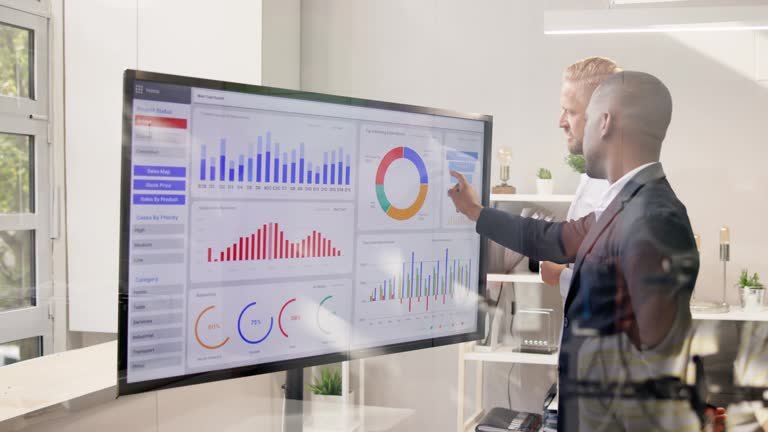1. Introduction
Business analytics tools have become essential for organizations aiming to leverage data for strategic decision-making. In 2024, businesses need tools that offer comprehensive insights and enhance their analytical capabilities.
These tools help in understanding market trends, customer behavior, and operational efficiency. From predictive analytics to real-time data visualization, the landscape of business analytics is evolving rapidly. This article explores the top business analytics tools of 2024, focusing on their features, benefits, and how they can drive business growth.
2. Tableau: The Leading Data Visualization Business Analytics Tools

Tableau continues to be a top choice for businesses due to its powerful data visualization capabilities. It allows users to create interactive and shareable dashboards that provide insights into key performance indicators.
Tableau’s ease of use and flexibility in connecting with various data sources make it ideal for both small businesses and large enterprises. With advanced features like AI-driven analytics and real-time data processing, Tableau helps organizations make informed decisions quickly and effectively.
3. Microsoft Power BI: Comprehensive Business Intelligence
Microsoft Power BI is renowned for its robust business intelligence and analytics features. It integrates seamlessly with other Microsoft products, such as Excel and Azure, offering a cohesive data analysis experience.
Power BI’s strengths lie in its user-friendly interface, customizable reports, and advanced data modeling capabilities. The tool supports a wide range of data sources and provides powerful data visualization options, enabling businesses to uncover insights and trends that drive strategic decisions.
4. Google Analytics: Essential for Digital Marketing
Google Analytics remains a cornerstone for digital marketing analytics. It provides in-depth insights into website traffic, user behavior, and campaign performance. With its real-time data tracking and customizable reports, businesses can monitor the effectiveness of their marketing strategies and make data-driven adjustments.
In 2024, Google Analytics continues to evolve with enhanced features for tracking cross-channel marketing efforts and integrating with other Google services, making it indispensable for online businesses.
5. Qlik Sense: Advanced Data Exploration
Qlik Sense is celebrated for its advanced data exploration and self-service analytics capabilities. It allows users to create interactive reports and dashboards with a focus on data discovery and visualization.
Qlik Sense’s associative model enables users to explore data from multiple perspectives, uncovering hidden insights and trends. Its ability to handle large datasets and support for various data sources make it a valuable tool for businesses seeking deep analytical insights and actionable intelligence.

6. SAS Analytics: Powerful Predictive Analytics
SAS Analytics is known for its powerful predictive analytics and statistical modeling capabilities. It offers a wide range of advanced analytics solutions, including data mining, forecasting, and optimization.
SAS’s sophisticated algorithms and analytical techniques help businesses predict future trends and make proactive decisions. With a strong emphasis on data quality and accuracy, SAS Analytics is ideal for organizations looking to gain a competitive edge through advanced predictive insights and data-driven strategies.
7. IBM Cognos Analytics: Enterprise-Level Reporting
IBM Cognos Analytics provides enterprise-level reporting and analytics solutions designed for large organizations. It offers a comprehensive suite of tools for data visualization, reporting, and performance management.
IBM Cognos Analytics excels in delivering actionable insights through its advanced reporting capabilities and customizable dashboards. The tool’s integration with various data sources and emphasis on data governance make it a top choice for enterprises requiring robust and scalable analytics solutions.
8. Sisense: Scalable Data Integration
Sisense stands out for its ability to integrate and analyze large volumes of data from diverse sources. It offers a scalable and flexible analytics platform that supports data preparation, visualization, and reporting.
Sisense unique approach to data integration, known as the “In-Chip” technology, enhances performance and speeds up query processing. With its user-friendly interface and advanced analytics features, Sisense is well-suited for businesses looking to harness complex data for actionable insights.
9. Domo: Cloud-Based Analytics
Domo is a cloud-based analytics platform that provides real-time data visualization and business intelligence. Its intuitive interface and wide range of pre-built connectors make it easy to integrate with various data sources and applications.

Domo’s strengths lie in its ability to deliver real-time insights and facilitate collaboration through shared dashboards and reports. For organizations seeking a cloud-based solution with robust data integration and visualization capabilities, Domo offers a powerful and flexible option.
10. Looker: Modern Data Exploration
Looker is a modern data exploration and analytics tool that emphasizes user-friendly data exploration and reporting. It provides a centralized platform for data analysis, enabling users to create custom reports and dashboards with ease.
Looker’s integration with cloud data warehouses and support for real-time data processing make it a valuable tool for businesses seeking to streamline their analytics workflows and gain deeper insights into their data. Its focus on user experience and data accessibility positions Looker as a leading choice for modern data analytics.
Conclusion
In 2024, the landscape of business analytics tools continues to evolve, offering new features and capabilities to meet the needs of diverse organizations. From powerful data visualization tools like Tableau and Power BI to advanced predictive analytics solutions like SAS and IBM Cognos, businesses have a wide range of options to enhance their analytical capabilities.
By leveraging these top analytics tools, organizations can gain valuable insights, drive data-informed decision-making, and achieve their strategic goals.





